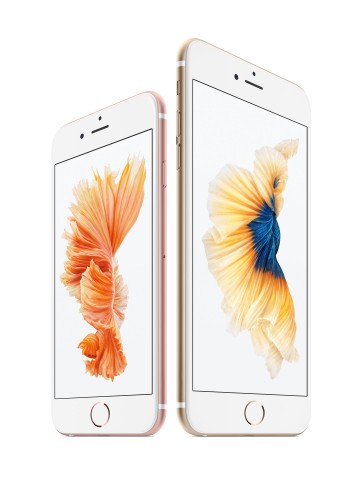The rush is on as Apple starts selling the iPhone 6S and 6S Plus on September 25. But for many, instead of joining long lines they'd rather grab the alternative - the wide choices of Android flagships out there, some of which equal or even exceed what the new iPhones have to offer.
Here are the reasons Android phone are better than iOS:
More available memory
Or more correctly, the option to add extra memory. Buyers of the iPhone 6S and 6S Plus are stuck with the internal storage space that come with the device whereas Android users can expand up to 128GB thanks to the microSD slot. One prime example is the Moto X 2015 or Moto X Pure Edition in the U.S. and Moto X Style for the rest of the world.
Wireless charging
A number of Android flagships, like the Galaxy S6, are ditching the once cherished feature of removable battery but in its stead wireless charging is natively supported. To date, iPhone users remain envious of such convenient features.
Micro USB
Still in the subject of charging, doing so in Android is easier and the credit goes to the more universally used micro USB port and connector. For iPhone users, Lightning is the standard, which is limiting in many ways.
Better file management
In truth, file management is non-existent on iOS-powered iPhone and the same remains true with the iPhone 6S. For Android device owners, date transfer is a breeze due to the wonderful file system that comes with the operating system. And like in Windows, the process merely involves the drag-and-drop maneuver.
Customization features
As for the user interface, both Android and iOS boast of advantages in aesthetic and functions but the former is beating the latter by allowing users some form of tweak access, which is not possible for iPhone users.
In Android, launchers like Google Now and Aviate can be installed on top of the operating system that practically gives the UI a fresh look. And adding widgets on the Home screen is another privilege that further extends the features of a given application. None of these can be done on iPhones.
More powerful notifications
Notification alerts on Android are easily seen, on the uppermost portion of the screen, and therefore encourages quick and easy corresponding actions. For iPhones, one needs to swipe down the screen first before seeing alerts.
Multiple windows
Multi-window feature has been an Android mainstay for a number of years. It permits users to view and work on two applications simultaneously, which essentially is multitasking on a mobile device. Apple recently introduced two similar functions in iOS 9 called Split View and Picture-In-Picture but were made exclusively for iPads. On this area, still no joy for iPhone.



























